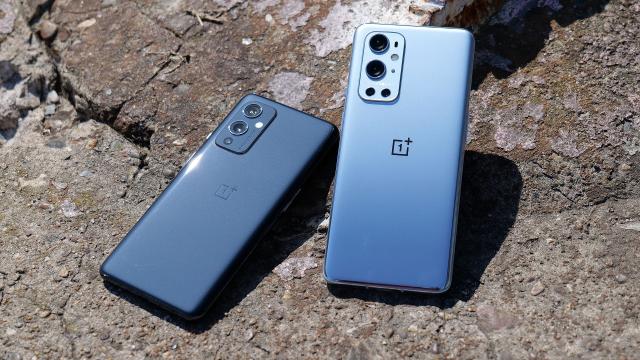One over-used description of Android is the “platform of choice,” but what happens when those choices all become…exactly the same? The recent news that OnePlus is headed for “deeper integration” with its overseas parent company, Oppo, could cause a shakeup in the Android smartphone landscape.
Google and Samsung offer pretty mainstream Android phones, but OnePlus had carved out a nice spot for itself as a maker of more affordable yet still powerful flagship Android phones. Android enthusiasts, in particular, regarded OnePlus devices for not only carrying on the feel that Google’s Nexus devices had once before, but also veering into the bleeding edge. But the company’s direction has shifted in recent years. Its flagship models graduated to Samsung-level prices and it introduced the more economical Nord models with an eye toward expansion. With Oppo in the driver seat, what will happen to Android’s last niche brand?
No Longer a Startup
The original OnePlus tagline when it was just a fledgling startup was #NeverSettle, the idea being that as a consumer, you should get maximum value for your money.
OnePlus started as a small phone maker that required users to enter a lottery before buying the device. That strategy lended an air of exclusivity to the phone brand. I remember talking to someone in line to board a plane about his OnePlus One — his friend convinced him to take his invite so he could get his hands on what many had considered an impressive device for the time. For $US300 ($385), it had a great-for-the-time Snapdragon 801 processor, 3GB of RAM, and 16GB of storage.
“There has to be a curation,” OnePlus cofounder Carl Pei told VentureBeat back in 2015 regarding the company’s method of choosing the best features for its then competitively priced smartphones.
Pei has since left the company in pursuit of another startup called Nothing. But “Never Settle” is a phrase that OnePlus has continued with — you see it splashed across the screen on renders of new phones. For its business to grow, however, it has to start settling a bit. After all, you can’t set roots if you’re not properly grounded.
For several years in a row, OnePlus dropped a major flagship annually, then gradually moved to three major models per year: two flagships out of the gate and a “T” model to satiate the mid-year upgraders. But this wasn’t a viable strategy for growth. Considering that OnePlus’s market share has remained mostly stagnant in the U.S., the company has started to increase the number of smartphone models it offers. It’s a move that aligns more with a company looking to move more phones rather than maintain exclusivity.
Big Phones, Big Dreams

The value of a OnePlus smartphone has always been impressive specs packed into an affordable package. However, that value has dissipated in recent years as OnePlus flagship phone prices now match Samsung’s. Granted, OnePlus has attempted to add value with things like a Hasselblad camera partnership, 5G connectivity, impressive battery life, and fast-charging capabilities. But those are premium features intended for a well-heeled crowd.
There have since been several reasonably priced, mid-tier OnePlus phones, including the $US240 ($308) Nord N200 5G, which just announced in the U.S. It’s a similar strategy to what Motorola has done with its Moto G-series, which you can buy in an array of configurations at varying price points. We even see it with Samsung’s Galaxy A smartphones, which get good ratings for their value and performance. Oppo has had similar success with this kind of smartphone expansion overseas, and it has the financial backing to pursue this same strategy with the OnePlus brand.
Don’t Expect Any Significant Changes — Yet
OnePlus has had a wonky track record when it comes to Android updates. The smartphone runs its version of Android called Oxygen OS. While the company has done well in adding value to the Google experience across its devices, it hasn’t been the most consistent at updating software on time. When you’re a prominent manufacturer trying to reel people in to use your devices, software is an absolute priority. It’s why Samsung soaked up some fanfare over the fact that it would support its devices for up to three years.
Since OnePlus is effectively joining forces with its money-daddy, there’s some hope that this will fix some of its update delays. In a statement in the OnePlus forums, the company’s current CEO Pete Lau (a former executive at Oppo) offered a bit of optimism at how the merger would positively affect the brand.
“With this deeper integration with Oppo, we will have more resources at hand to create even better products for you,” he posted. “It will also allow us to be more efficient, for example, bringing faster and more stable software updates for OnePlus users.”
Beyond that, it’s unlikely you’ll see a significant change in the software on OnePlus devices. OxygenOS was retired overseas, but Lau has said that “OxygenOS will remain the operating system for global OnePlus devices outside of the China market.” There is an Oxygen OS update on the horizon that’s rumoured to be majorly aesthetic, and that’s likely to align with Android 12.
At its essence, OnePlus is still a tiny brand playing in a sandbox with long-established giants. It helps to have a giant global company like Oppo to back it up. OnePlus can even solidify itself as one of the few Chinese brands competing in the U.S. — a market that has prevented some of Oppo’s overseas rivals, namely Huawei, from gaining a foothold here. Whether that takes away from OnePlus’s initial scrappiness remains to be seen. The end result could be a well-resourced brand that can offer Android users more choice — or could spell the end for a once-exciting smartphone maker that has since lost its way.
